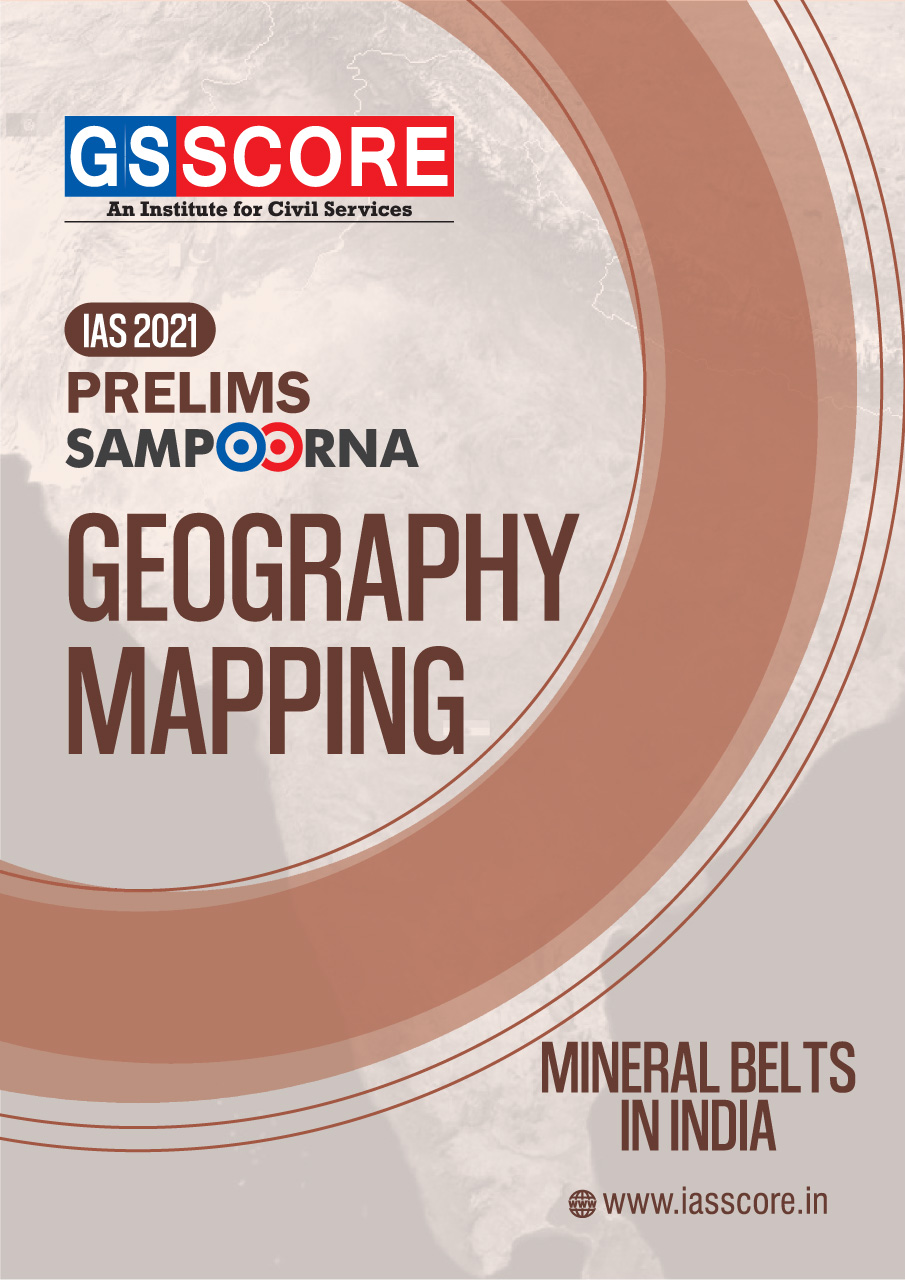
Strategy for UPSC Prelims
From the very beginning, MAP-BASED QUESTIONS are a regular feature in the UPSC Civil Services Prelims Exam. If you don’t study an atlas, your UPSC exam prelims preparation will not be complete. Maps based questions are often a source of confusion among the aspirants in UPSC Prelims exam. It is very difficult for aspirants to think about where to begin with when it comes to maps or atlases. This article will provide you a few pointers on how to effectively and smartly utilise the maps or atlas for preparing the mapping section of Indian Geography and tackle those questions in UPSC exam. Year by year, the weightage carried by map based question has been increasing in the UPSC Prelims.
The mapping questions range from 1-2 every year whereas the questions asked from Geography varies from 8-10.
Often there are two types of map based questions asked by UPSC: One is from static part which every aspirant is supposed to know while other being dynamically mapped with current affairs.
Aspirants often gets confused where to being as Maps are an intrinsic part of their entire preparation.
Source of Study
Certain books that are needed to carry out your map-based preparation are: Oxford Student Atlas or Orient BlackSwan School atlas. Other than atlas, the most important material needed is your Daily Newspaper (The Hindu, Indian Express etc.).
Newspapers will help you to stay informed about the various important geographical region and places in news and prepare accordingly.
Let’s divide the portion into two parts for the sake of convenience before discussing the strategy to prepare the map based questions:
Questions based on World Map:
It is advisable to start studying the map continent wise in this section. The following points needed to remember while preparing the world map:
- Those countries which have remained in news recently needs to be covered foremost. For an example Afghanistan so try to map its neighbouring countries and border countries and places of importance in that region like UNESCO World Heritage Sites.
- Try to arrange major cities, seas, islands, etc. again in north-south and east-west alignment.
- Regional groupings such as ASEAN group of nations, BRICS, SCO, QUAD, SAARC and European Union needs special focus,especially those grouping whose meet or summit has been organized recently.
- Physical features of continents should be prepared such as Mediterranean Sea, Black Sea, Caspian Sea, etc.Important mountains of continents, volcanoes of continents, important rivers forming boundaries of countries, countries sharing boundary with a particular sea, etc.
- The featured tribes of continents and their countries, local grasslands and their regional names, minerals found in different continents etc.
- Sometimes ocean currents, storms, winds, deserts are also asked in the exam so try to make a list of them in maps.
Questions based on Map of India
- It is recommend to start with the political map of India.
- It is must to remember the location of all states and Union territories, major cities, which state borders maximum no. of states, which states share international borders.
- It is advisable to remember the position of capital cities, ports, dams, mountains, etc. of India in North-South and East-West order.
- Try arranging the major cities north to south, east to west, which states have tropic of cancer passing through it etc.
- Which major rivers passing through the major cities, capitals etc. for example Sabarmati from Ahmadabad, Tapi from Surat.
- Once thorough with political locations move on to the most important physical map.
- Try to segregate your preparation in different physical regions and reliefs.
- A map of the Himalayas geographical extent, its division (lesser, middle. Greater), which passes connect which cities or region and lies in which state, any rivers which originates from these mountains and flows through these passes (for example river Satluj enters India through Shipkila pass) should be imbedded in an aspirant’s mind.
- An aspirant needs to be thorough with major rivers-their origin, tributaries, states and cities which they flow through, are they east flowing or west flowing rivers etc.
- From prelims point of view, Northeast is very much important region. Go through the rivers, various hills (arrange them from north to south, east to west) important national parks in these physical relief of the north eastern region. For example Government has announced Sela pass in previous budget, try locate in which state it lies, Atal Tunnel connects which regions,similarly on which river Bhupen Hazaraika Bridge is built, etc.
- The peninsular India study should be focused on Western and Eastern Ghats, regional hills, plateaus, national parks.
- National Parks and reserves: UPSC have started asking question from this area. It is impossible to remember them allthe National Parks and reserves as there are more than 100 of them. The best strategy would be to read about the most important ones and the ones frequently in news. Try to know about their location state wise, rivers which flow through them, do they share any border with other state or neighbouring countries.

The entire process of preparation of map based questions is a very time consuming process takes almost a year to prepare such vast scale information. However, this can be minimized through Prelims Sampoorna Map Based Questions which has been brought by GS Score. This unique compilation helps you to ace map based questions.
More Articles

